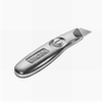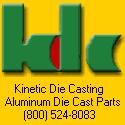Message from Los Angeles Valley College: Hello Friends and Supporters of the Manufacturing Academy at Los Angeles Valley College. We are happy to announce that LAVC and the Office of Congressman Tony Cardenas will be hosting a National Manufacturing Day …
Continue reading
Category Archives: Die Casting Alloys
Made In California Featured Manufacturer
Thank you CMTC for recognizing #kineticdc as a leader in die castings in California.

Kinetic Die Casting Company is the featured manufacturing company in the CMTC Made In California website (http://www.cmtc.com/made-in-california-profile/kinetic-die-casting-company-inc).
Our Capabilities:
Die castings produced from 50 to 100 aluminum parts each day (low customer demand).
Die castings produced to over 5,000 aluminum parts a day (high customer demand).
Aluminum die casting part sizes from .001 pounds to 10 pounds.
Die casting aluminum part sizes range from .025″ x .025″ to 15″ x 15″.
Aluminum: 380, 383, 360, and 413 Die Casting Alloy.
Kinetic Die Casting Company
6918 Beck Avenue
North Hollywood,
California USA 91605
818-982-9200
800-524-8083
sales@kineticdc.com
Made in CA featured: http://www.cmtc.com/made-in-california-featured-manufacturers
California Manufacturing Technology Consulting® (CMTC)
Zinc and Aluminum Alloys
Zinc Die Casting ZINC-ALUMINUM (ZA) ALLOYS. There are several different types of alloys available. Die casting alloys can have physical and mechanical properties for pretty much any application a designer or consumer may require.
Zinc die-casting alloys are stronger, harder, and more flexible than other alloys such as aluminum or magnesium. Zinc alloys could be used to cast amazingly miniature, multifaceted shapes. They might be manufactured smoother, modest, more exact, and at lower cost. Zinc die castings can additionally be painted and can be better plated than aluminum or magnesium alloys. Zinc’s low temperature point allows for a longer die life, even when making large quantities of parts. Zinc die-casting is less costly allowing segment fashioners and clients to create tight dimensional tolerances, quick creation process durations, slender divider segments, and high mechanical properties.
To a great degree miniature castings are transported on distinctive hot-chamber machines with high pressure durations. These machines produce close-tolerance castings that also does auxiliary trimming or machining operations. The four-slide machine uses sliding to deliver intensely perplexing and tight-tolerance segments with openings perpendicular to one another, under-cuts, opposite edges, and strings.
Limits on the measure of castings – more appropriate for little castings up to something like seventy-five pounds. Rigging and fail hard costs are high.
This is the blog on the Kinetic Die Casting Company web site and talks about the various Aluminum Parts Manufacturing. Look at this website page for more details: http://kineticdiecasting.blogspot.com/. Contact Kinetic Die Casting Company at 818-982-9200 or email us at sales@kineticdc.com. Use this webpage to request “die casting part prices” www.kineticdiecasting.com/replyform.html
Hot Chamber Die Casting Parts
List of Hot Chamber Die Casting Parts. Hot chamber die casting parts are used for manufacturing metals that bear detailed shapes. It is called hot because it utilizes heat to melt certain alloys such as zinc, lead, magnesium and copper. In a molten state, the alloys pass through pipes to fill a container that’s formed according to what the manufacturer wants to manufacture. Subsequently, the hot alloy is cooled and it goes back to its hard form while preserving the shaped design. This can be done with the use of mechanical equipment; therefore a lot of metal pieces may be molded using the same die cast.
Here are the chief hot chamber die casting parts:
•
•
•
•
•
•
Hot chamber die casting parts vary in terms of size and quality. The cost will be contingent on the material used and the difficulty of the design. You can purchase the mechanisms distinctly or in a sole bundle; expect that the whole package is costlier likened to one or two parts.
This is the blog on the Kinetic Die Casting Company web site and talks about the various Aluminum Parts Manufacturing. Look at this website page for more details: http://kineticdiecasting.blogspot.com/. Contact Kinetic Die Casting Company at 818-982-9200 or email us at sales@kineticdc.com. Use this webpage to request “die casting part prices” www.kineticdiecasting.com/replyform.html




